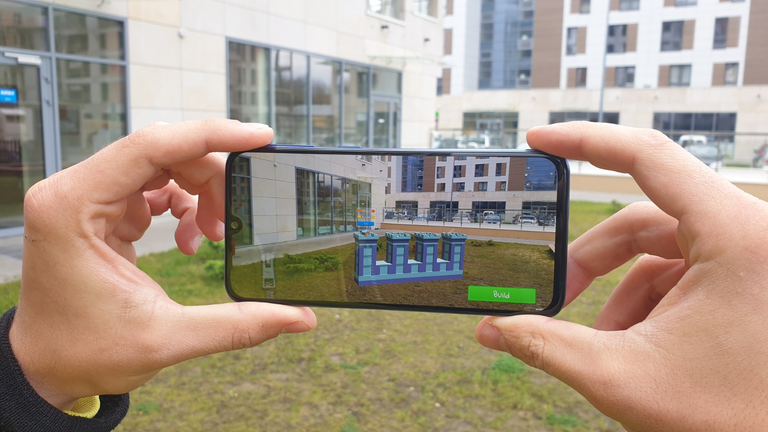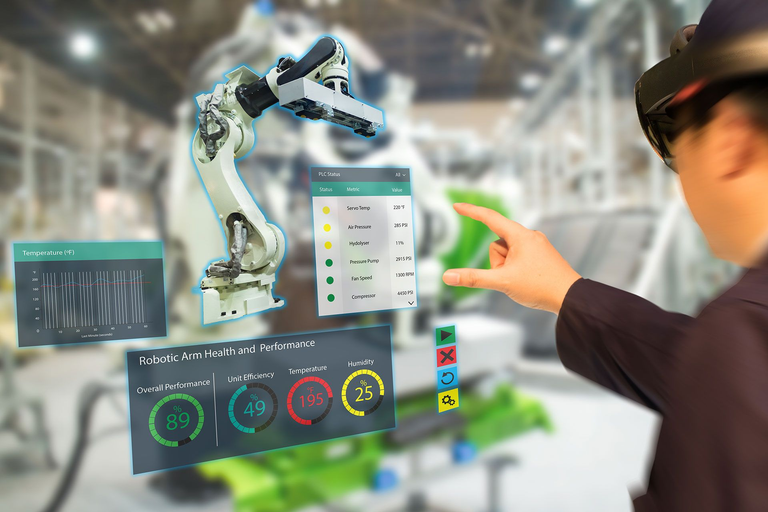How Augmented reality (AR) technology is changing our lives?
Augmented reality (AR) refers to the use of technology to overlay digital information and images on the real world. It is often achieved through the use of a device, such as a smartphone or a head-mounted display, which is equipped with a camera and sensors that can track the user's movements and surroundings.

AR technology can be used for a wide range of applications, including entertainment, education, and training, as well as in industries such as manufacturing, retail, and healthcare. Some common examples of AR include Snapchat lenses, Pokemon Go, and the use of AR to visualize furniture in a home before making a purchase.
One of the earliest examples of AR was the "yellow first down line" that appeared on televised American football games in 1998. Since then, AR has come a long way and is now being used in a variety of applications.
In the entertainment industry, AR is being used to create immersive experiences in gaming, movies, and other forms of media. For example, the mobile game Pokémon Go, which was released in 2016, used AR technology to allow players to catch virtual creatures that appeared on their smartphone screens as if they were in the real world.
AR is also being used in education and training. For example, AR can be used to help people learn how to perform maintenance on a piece of machinery or how to properly assemble a product. This can be especially helpful for tasks that are complex or dangerous, as it allows people to practice in a safe and controlled environment.
AR is also being used in the retail industry to help shoppers visualize how a piece of furniture or other product would look in their home before making a purchase. This can be especially helpful when shopping online, as it allows people to get a sense of how the product will fit in their space without having to physically see it in person.
In the manufacturing industry, AR can be used to help workers visualize complex assembly instructions or to perform tasks more efficiently. For example, AR can be used to display step-by-step instructions on a worker's headset, allowing them to focus on the task at hand rather than having to refer to a manual.

AR is also being used in the healthcare industry to help medical professionals visualize patient data, such as CT scans or X-rays, in a more intuitive way. This can help doctors and other healthcare professionals make more informed decisions about treatment.
The military is also starting to use AR to help soldiers visualize battlefield information and perform their duties more effectively. For example, AR can be used to display maps, targeting data, and other information that can help soldiers navigate complex environments and make better decisions.
In the tourism industry, AR can be used to help tourists learn more about a location or to enhance their sightseeing experience. For example, AR can be used to display historical information about landmarks or to provide translations in real-time.
There are several concerns surrounding the use of augmented reality (AR) technology. Some of these include:
Privacy: The use of AR technology often requires access to personal data, such as location information, and this has raised concerns about the privacy of users.
Security: AR apps and devices may be vulnerable to hacking, which could potentially compromise user data or allow unauthorized access to personal information.
Distraction: There are concerns that AR technology may distract users from their surroundings, leading to accidents or injuries.
Addictive: There is a risk that users may become overly reliant on AR technology, leading to addiction or other negative consequences.
Misuse: AR technology has the potential to be used for malicious purposes, such as spreading misinformation or propaganda.
Accessibility: Not everyone has access to AR technology, and this may create social and economic divides.
Health effects: There is some evidence to suggest that prolonged use of AR technology may have negative effects on vision or other health outcomes. However, further research is needed to fully understand these potential health effects.
Overall, the use of AR is expected to continue to grow and expand into new areas in the coming years. As technology continues to advance, it is likely that we will see even more innovative and creative uses for AR.
Entertainment, education and training are the sectors that have been benefiting in some way from the technologies, and it is precisely the developments in augmented reality technology that have been occupying spaces in these three large and important sectors for modern society.
There is reasonable evidence that this article is machine-generated. Posting such content is considered fraud.
Fraud is discouraged by the community and may result in the account being Blacklisted.
Guide:
Why and How People Abuse and Defraud
If you believe this comment is in error, please contact us in #appeals in Discord.